Bloodworms and willow grubs are a highly sought after food for trout. I describe each of these insect larvae, then provide the recipe and tying steps for the Jelly Bloodworm and Jelly Grub fly patterns which are very similar.
Bloodworms
Bloodworms are the red larvae of Chironomid midges, typically found in lakes and slower sections of lowland rivers with beds of silt or mud. Midges inhabiting well oxygenated flowing water tend to be smaller and have larvae that are translucent olive green.
Good bloodworm imitations are highly effective on educated fish in lakes and also work well in backwaters.
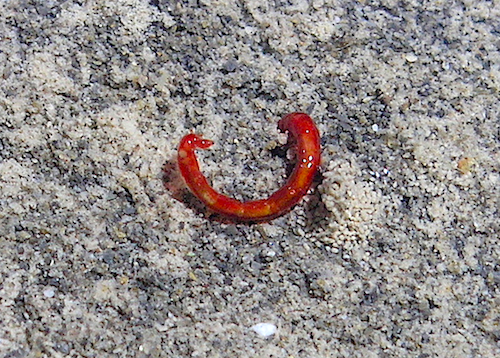
The Jelly Bloodworm accurately captures the segmentation and translucency of the natural. Replace the red thread with green (of the appropriate shade) to match the green and red bloodworms found at some locations.
Willow Grubs
Willow Grubs are larvae of the willow gall sawfly, Pontania proxima. Many lose their footing during feeding forays in summer and fall into the water. Trout inhabiting lowland streams and rivers have learnt to take advantage of this seasonal food source.
The Jelly Grub is about as realistic as you can get; capturing perfectly the yellow/green translucency and darker alimentary canal of the natural. The Jelly Grub also makes a fairly good micro-caddis or olive midge larva imitation for finicky fish in the likes of spring creeks. The Jelly Grub becomes lighter in colour once it is submerged, taking on an attractive yellow/green glow.

Recipes :
Jelly Bloodworm
ORIGINATOR : Marc Griffiths
HOOK : Heavy wire grub hook size 14-12
THREAD : Red UTC 140 denier
ABDOMEN : Red 0.5-0.6 mm Stretch Cord
Jelly Grub
ORIGINATOR : Marc Griffiths
HOOK : Light wire grub hook size 18-16
THREAD : Light olive 70-100 denier
ABDOMEN : Yellow 0.5-0.6 mm Stretch Cord
ABDOMEN: Light green or yellow Stretch Cord: 0.5mm for #18 and 0.6-0.7mm for #16
Tying Steps
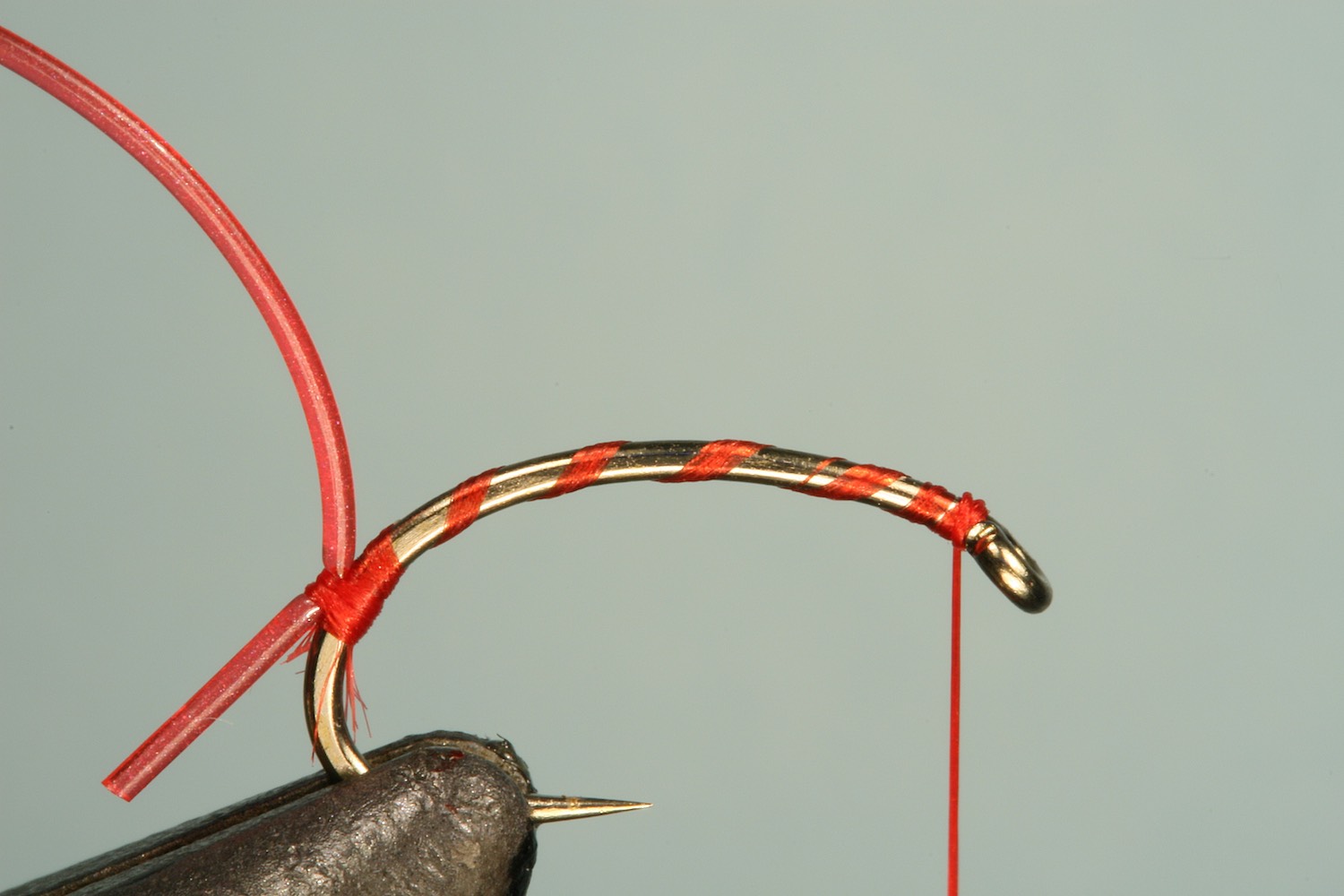
Step 1
Attach the thread to the bend of hook using as much torque as is possible. Tie in a single strand of red stretch cord with three tight turns of thread, atop one another. Make two more turns immediately in front of the tie-in, followed by an additional two wraps over the original turns (this locks and prevents strands spinning round shank when wrapping). Make two more turns in front of the tie-in and then advance the thread to the hook eye in open turns, exposing as much of the shank as possible.
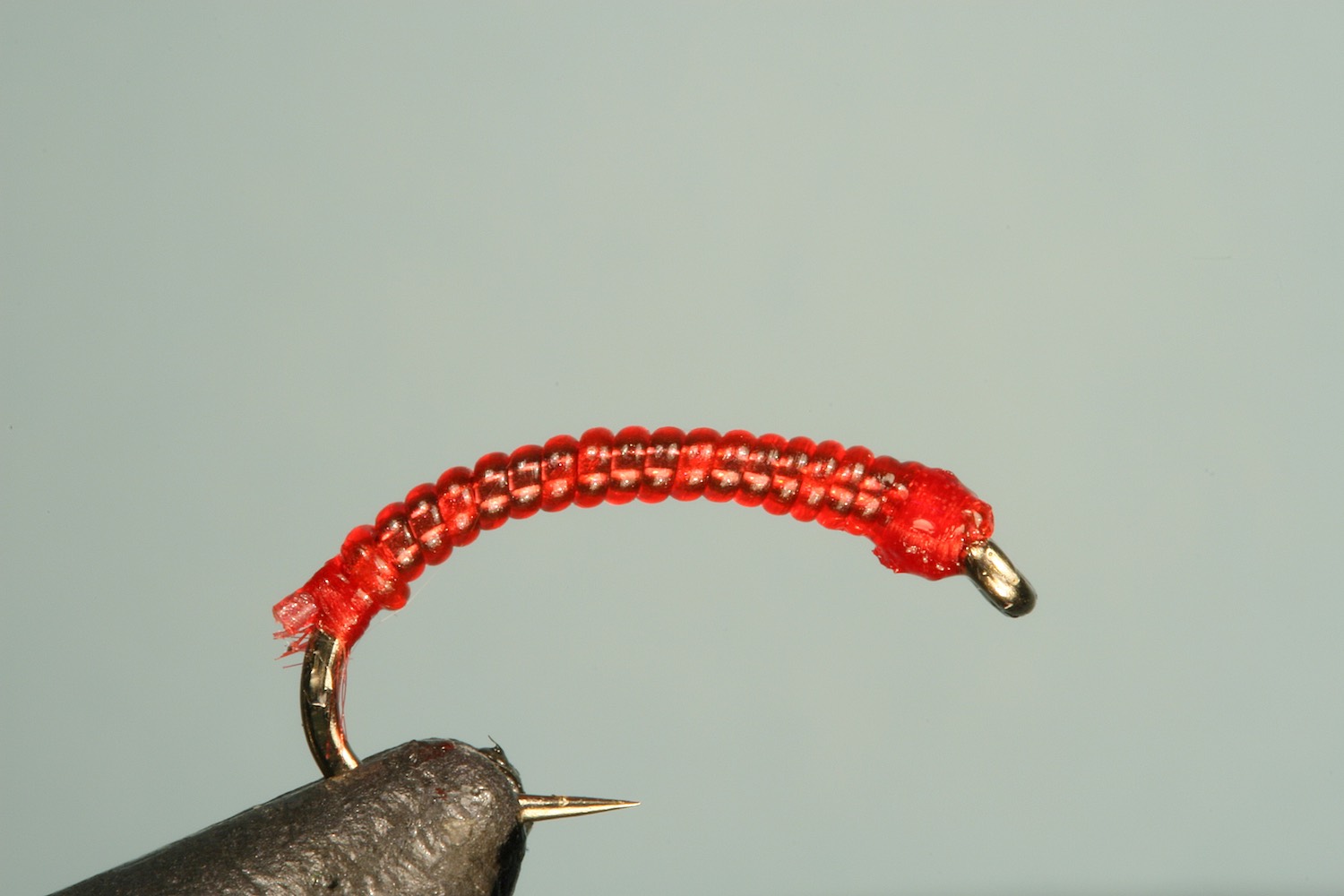
Step 2
Now stretch the cord and wrap it forward in closed turns. Tie it off behind the eye and build a slight thread head. Varnish both the tie-in on the hook bend and the tie-off at the eye.
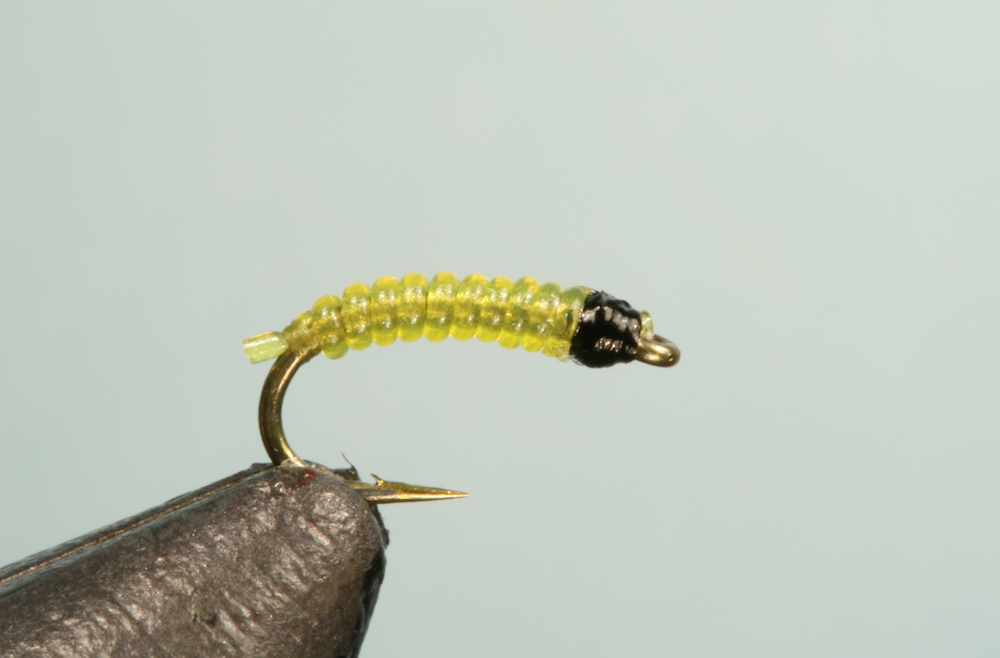
Tying the Jelly Grub
To tie the Jelly Grub attach a single strand of stretch cord at the hook bend, advance the olive thread to the hook eye in closed turns, and tie off.
Next attach the black thread just behind the eye. Now complete the fly as described for the Jelly Bloodworm (Step 2 above).
Alternative tie:
Use this method to tie a #16 Jelly Grub with 0.5 mm diameter Stretch Cord (i.e. when 0.6-0.7mm cord is not available)
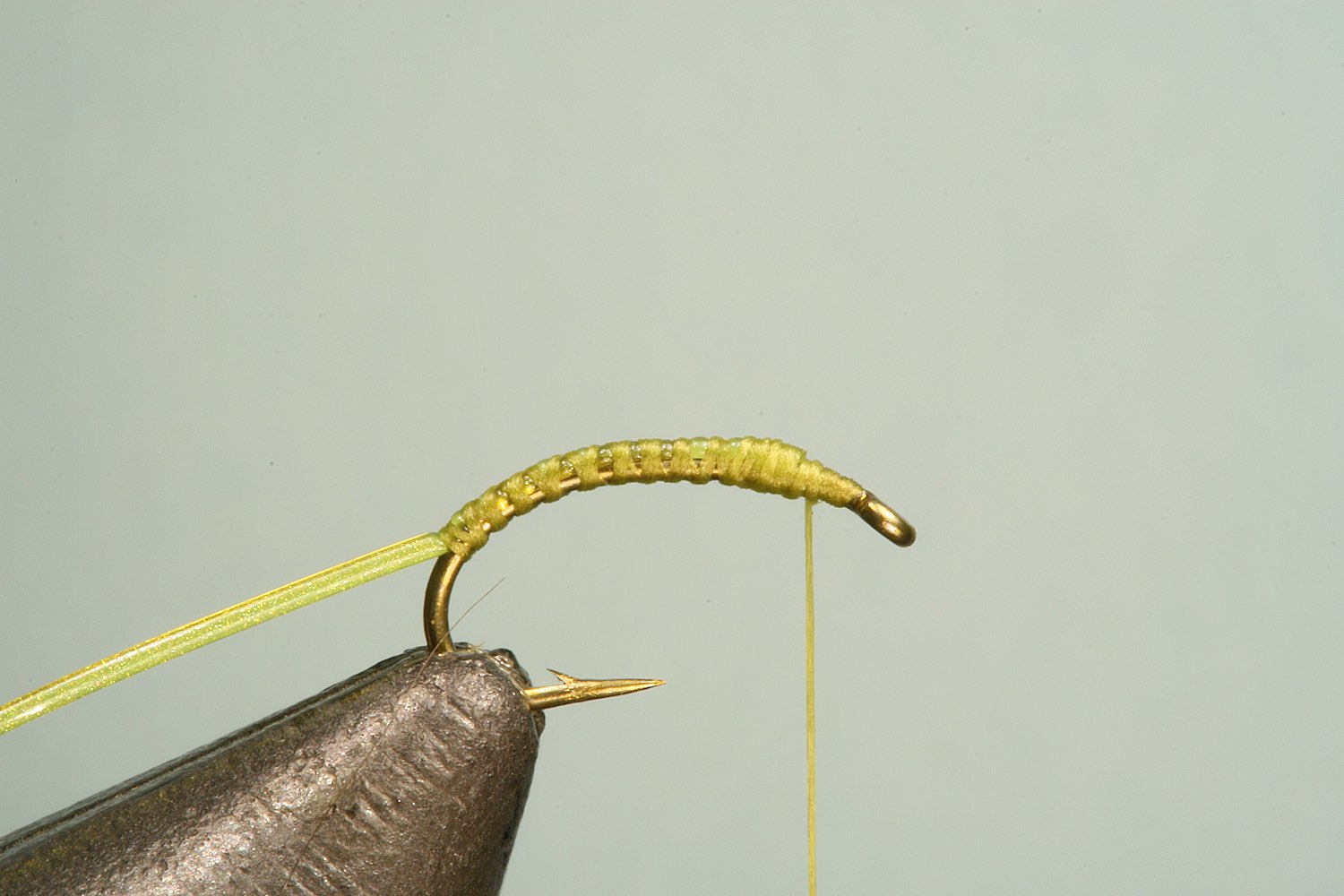
Step 1
Tie the single strand of yellow Stretch Cord in about 1 mm behind the hook eye, with three tight turns of medium olive thread. Now stretch the Cord as much as possible while tying it down atop the hook shank, with tight reasonably close thread turns, so as to minimize overall volume. Next return the thread to the hook eye, taking care to flatten the small tag created when you tied it in.
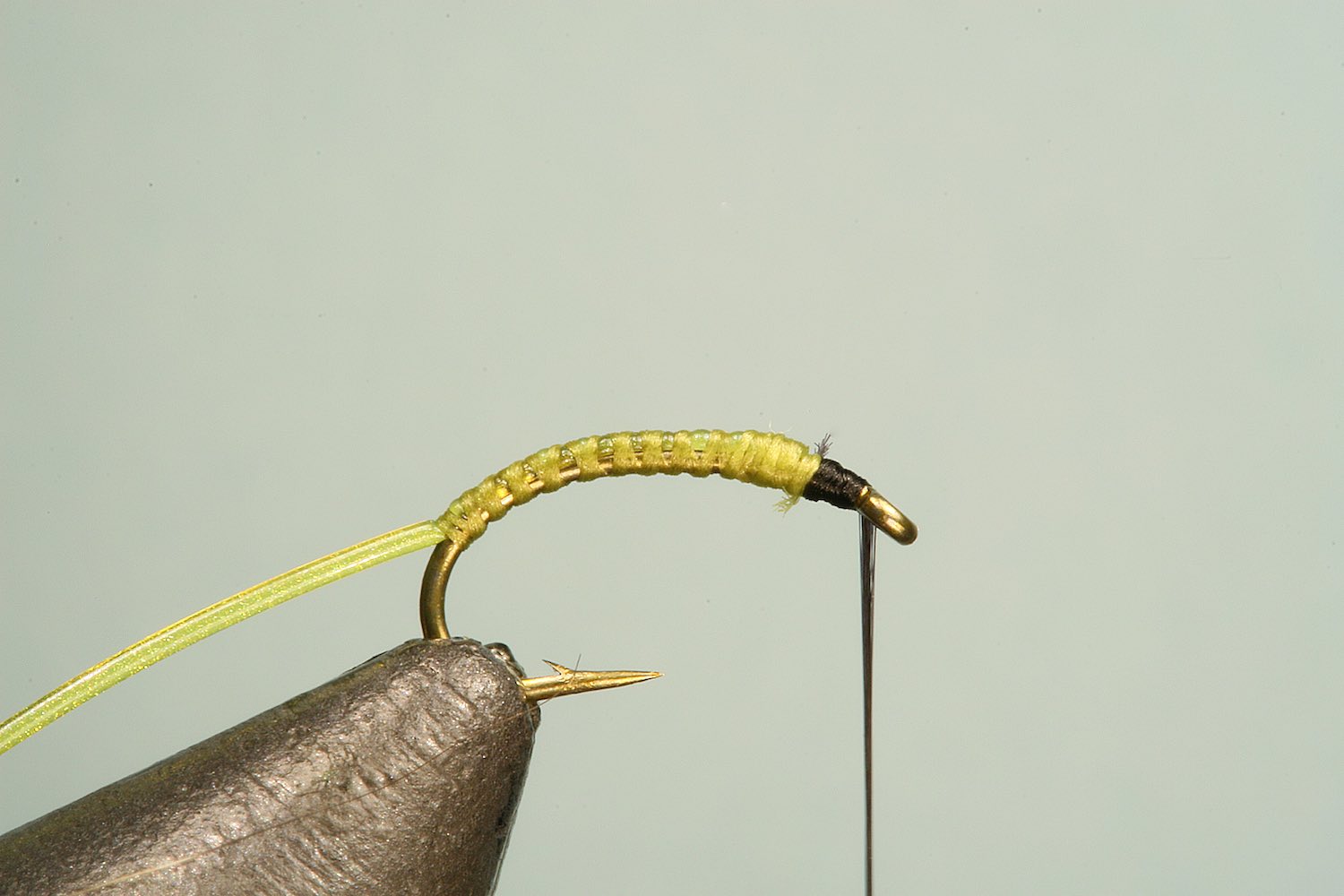
Step 2
Tie off the olive thread and attach the black.
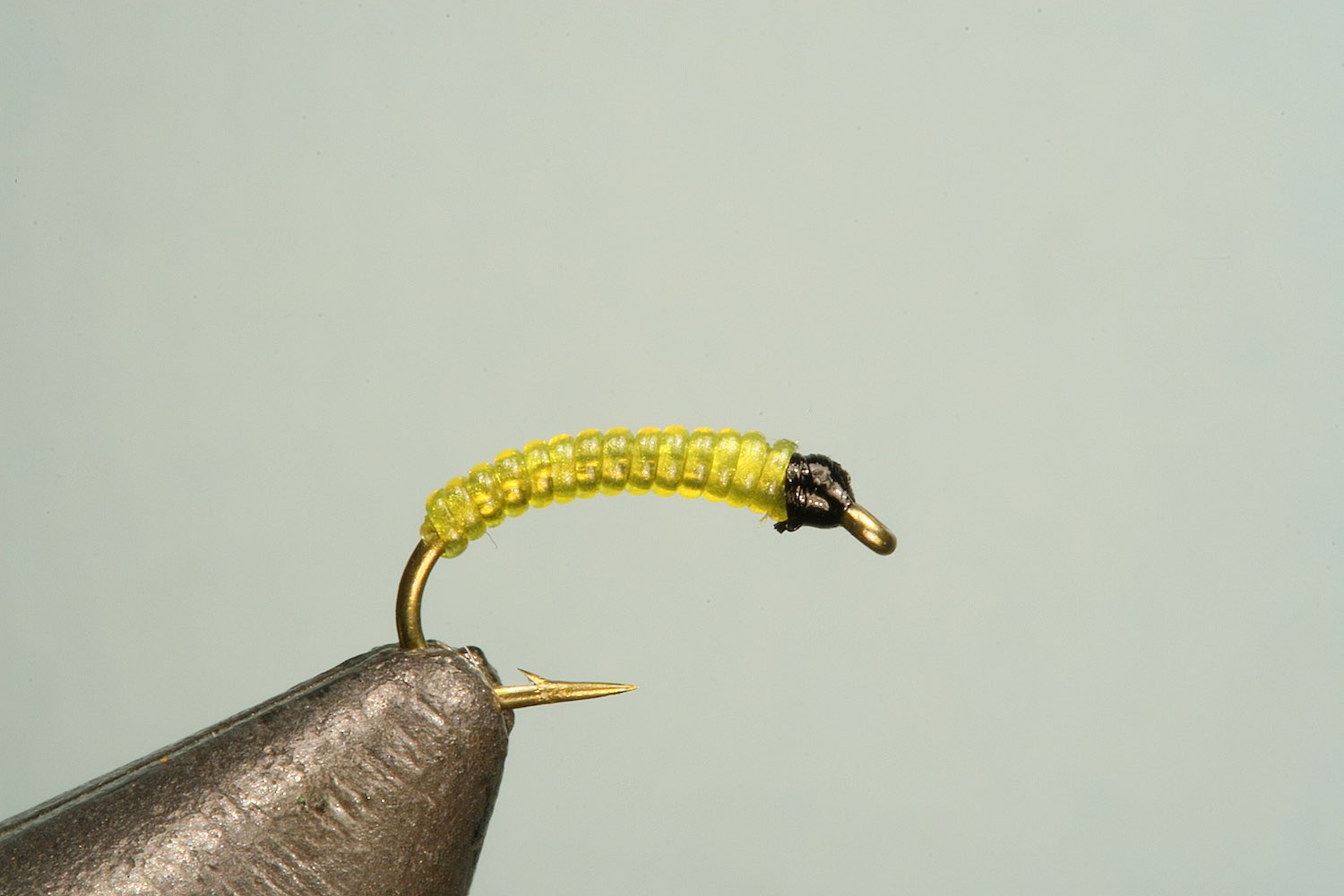
Step 3
Stretch and wrap the Stretch Cord forward and around the shank, tying it off immediately in from of the tie-in. Finally build a head of black thread, tie off and varnish.
+ Effective Spey flies for New Zealand Trout and techniques for fishing them
+ Evolution of the Swing Minnow - A deadly Trout Spey Streamer
+ Introduction to wonders of Stretch Cord
+ Jelly Midge
+ Jelly Caddis
+ Jelly Leg Colly
+ Jelly Bellow Minnow
+ Jelly Crimp Nymph
+ Hot Foam Hopper
+ Hare's Mask Darter
+ Silicone Wing Cicada - Designing the Fly
+ Silicone Wing Cicada - Tying Steps
+ Gurgle Pop Minnow
+ Cutting your own Foam Cylinder
